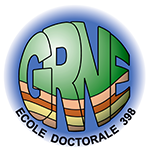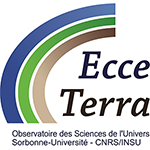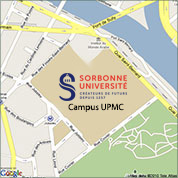Séminaire ISTeP - Claudio Rosenberg
(ISTeP)
Relating orogen width to shortening, erosion, and exhumation during Alpine collision
We investigate along-strike width changes of the thickened, accreted lower plate (TALP) in the Central and in the Eastern Alps. We set the width of the TALP in relation to the inferred amount of collisional shortening and exhumation along six orogen-scale cross sections. Taking the present-day, along-strike gradients in the amount of collisional shortening to represent the temporal evolution of the collisional wedge, it may be concluded that the cross-sectional area of the TALP diminishes during ongoing shortening, indicating that the erosional flux outpaced the accretionary flux. Higher amounts of collisional shortening systematically coincide with smaller widths of the TALP and dramatic increases of the reconstructed eroded rock column. Higher amounts of shortening also coincide with larger amplitudes of orogen-scale, upright folds, with higher exhumation and with higher exhumation rates. Hence, erosion did play a major role in reducing by >30 km the vertical crustal thickness in order to accommodate and allow shortening by folding.
Long-term climate differences cannot explain alternating changes of width by a factor of almost 2 along straight segments of the orogen on length scales less than 200 km, as observed from the western Central Alps to the easternmost Eastern Alps. Sedimentary or paleontological evidences supporting such paleo-climatic differences are lacking, suggesting that erosional processes did not directly control the width of the orogen.
27/11/2015 à 12h30, Salle Fourcade (Tour 55-56, 4ème étage)
Egalement dans la rubrique
- Séminaire ISTeP - Francisco Ciocci
- Séminaire ISTeP - Pierre Beck
- Séminaire ISTeP - Irene Molinari
- Séminaire ISTeP - Galen Halverson
- Séminaire ISTeP - Tony Watts
- Séminaire ISTeP - Pierre Olivier Bruna
- Séminaire ISTeP - Pierre Sansjofre
- Séminaire ISTeP - Benjamin Malvoisin
- Séminaire ISTeP - Marianne Métois
- Séminaire ISTeP - Benjamin Guillame
Chiffres clés (Mars 2025)
L'ISTeP comprend 131 membres dont :
Permanents (66)
- Professeurs : 17 (+2 PAST)
- Maîtres de conférence : 26
- Directeurs de recherche CNRS : 1
- Chargés de recherche CNRS : 1
- ITA : 19
Personnels non permanents (65)
- Collaborateurs bénévoles / émérites : 17
- Chaire de professeur junior : 1
- Enseignants-chercheurs contractuel : 2
- 1 MCF accueil en délégation
- ATER et Post-Docs : 9
- Doctorants : 32
- ITA-BIATSS : 3





